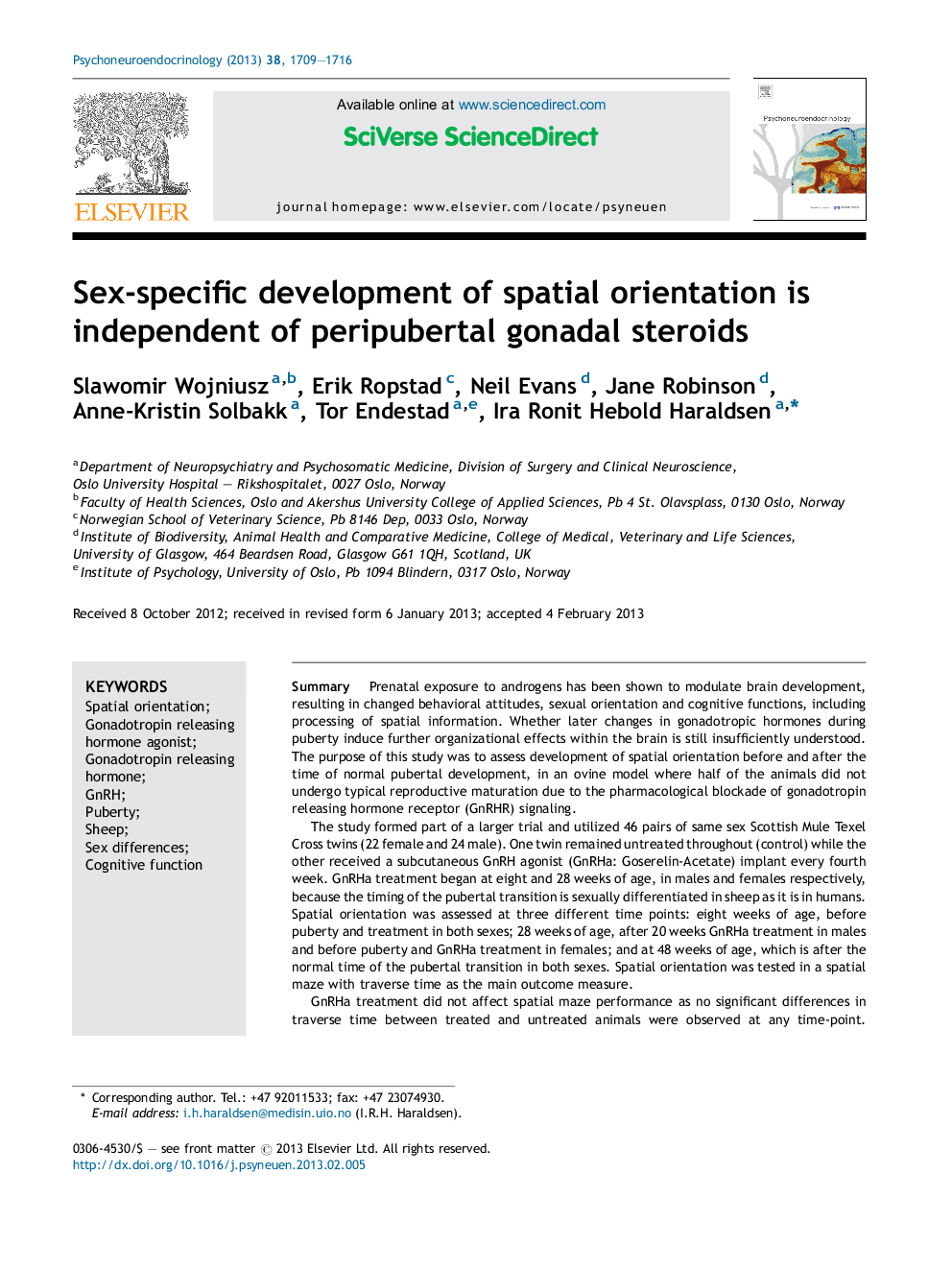| Article ID | Journal | Published Year | Pages | File Type |
|---|---|---|---|---|
| 10306082 | Psychoneuroendocrinology | 2013 | 8 Pages |
Abstract
GnRHa treatment did not affect spatial maze performance as no significant differences in traverse time between treated and untreated animals were observed at any time-point. Adolescent females (48 weeks of age) traversed the maze significantly faster than adolescent males, whereas no sex differences in traverse time were seen at earlier developmental stages (eight and 28 weeks). Development of sex differences in spatial orientation was independent of exposure to pubertal hormones since puberty-blocked and control animals both showed the same pattern of spatial maze performance. This result demonstrates the prenatal nature of spatial orientation development. Furthermore, the unexpected finding that female animals outperformed males in the spatial orientation task, underscores the importance of the testing context in spatial orientation experiments.
Keywords
Related Topics
Life Sciences
Biochemistry, Genetics and Molecular Biology
Endocrinology
Authors
Slawomir Wojniusz, Erik Ropstad, Neil Evans, Jane Robinson, Anne-Kristin Solbakk, Tor Endestad, Ira Ronit Hebold Haraldsen,
